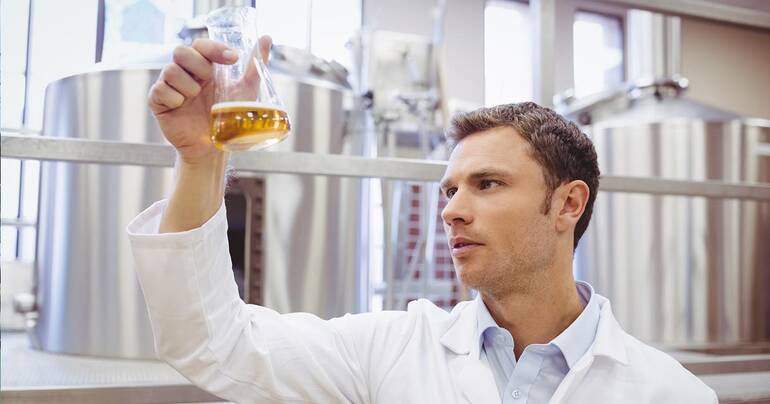Start 14-Day Trial Subscription
*No credit card required

Tastier Beer!? Microbiologists Discover Way to Improve Beer's Flavor
Is there a way to make beer somehow taste even better than it already does?! Recent scientific discoveries say yes.
Science is an amazing thing, isn’t it? It can explore the furthest reaches of our galaxy and delve into the smallest microscopic particles known to humanity.
But I know what you’re thinking: “What have scientists done for beer lately?*” Well, according to Belgian investigators, they’ve identified and engineered a gene that is responsible for much of the flavor of beer and other alcoholic drinks – meaning that if they were to isolate this gene and make it readily available – all beer could taste better.
With flavors as good as they are in the craft beer world, how is this possible? Let’s delve into the science.
According to a release from the American Society for Microbiology, “Johan Thevelein Ph.D., an emeritus professor of Molecular Cell Biology at Katholieke Universiteit in Leuven, Belgium, and his team had pioneered technology for identifying genes responsible for commercially important traits in yeast. They applied this technology to identify the gene(s) responsible for flavor in beer, by screening large numbers of yeast strains to evaluate which did the best job of preserving flavor under pressure. They focused on a gene for a banana-like flavor ‘because it is one of the most important flavors present in beer, as well as in other alcoholic drinks,’ said Thevelein, who is also founder of NovelYeast, which collaborates with other companies in industrial biotechnology.
Of course, any beer connoisseur recognizes that banana-like flavor from popular styles such as saison and hefeweizen – as it is the hallmark of Belgian yeast being employed in the brewing process.
Thevelein continues in the release: “To our surprise, we identified a single mutation in the MDS3 gene, which codes for a regulator apparently involved in production of isoamyl acetate, the source of the banana-like flavor that was responsible for most of the pressure tolerance in this specific yeast strain.”
After this discovery, Thevelein and coworkers “used CRISPR/Cas9, a revolutionary gene editing technology, to engineer this mutation in other brewing strains, which similarly improved their tolerance of carbon dioxide pressure, enabling full flavor.”
“That demonstrated the scientific relevance of our findings, and their commercial potential,” said Thevelein.
Of course, reducing carbon dioxide pressure is more commonly done in the brewing world these days through the use of coolships – large, flat vats that are open to the air and allow for wild yeast to ferment various wild styles such as Brett beer, lambics and others. For many small brewers, however, the use of coolships doesn’t make sense for myriad reasons: lack of space, out of their budget or, far more likely, no unique in-house wild cultures worthy of producing quality wild beers.
“The mutation is the first insight into understanding the mechanism by which high carbon dioxide pressure may compromise beer flavor production,” said Thevelein.
Certainly, there is more work and research to be done regarding this news, but it’s nice to know that scientists are truly doing their best to make beer better.
*Editor’s Note: Obviously, the field of brewing science is robust and extremely important to modern craft beer and brewing, and we are not in any way downplaying that. Nothing wrong with a bit of tongue-in-cheek fun once in a while, right?



